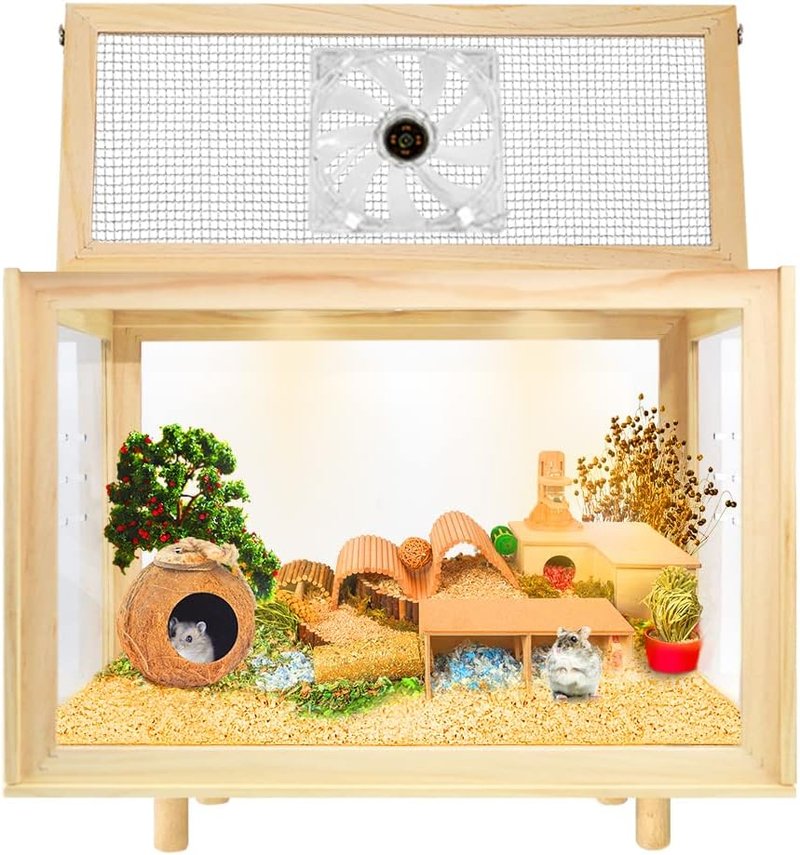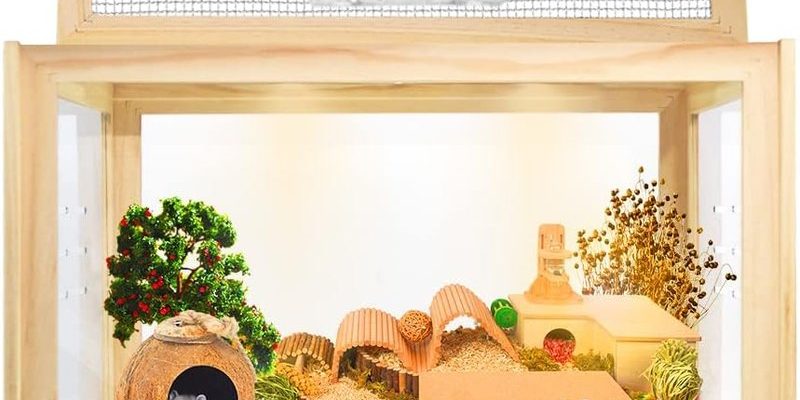
When it comes to cages, you want to consider not just the essentials but also how to make it comfortable and enriching. Popular brands like Kaytee and Ferplast offer different options, but the real fun starts when you personalize it with the right accessories. Let’s dig into how to set up the ultimate hamster home that keeps them happy and healthy.
Choosing the Right Cage Size
The first step in creating a fantastic hamster habitat is choosing the right cage size. Hamsters are active little creatures, and they need space to roam and explore. A standard guideline is at least 24 inches long for dwarf hamsters and 30 inches or more for Syrian hamsters. The more room they have, the better!
Here’s the thing: a bigger cage allows for more fun accessories, like wheels and tunnels, ensuring your hamster has plenty to do. Vertical space also matters, so go for a cage that has multiple levels or platforms. This not only adds more room for activities but also mimics their natural climbing habits.
You might want to think about cage materials, too. Wire cages are great for ventilation, while glass enclosures can help maintain humidity levels. Just ensure there’s enough airflow in whatever you choose!
Picking the Best Bedding
Bedding is critical for your hamster’s comfort. It provides insulation, absorbs odors, and offers a cozy spot to burrow. You might be wondering what types of bedding are best. Well, options like aspen shavings, paper-based bedding, and hemp bedding are popular choices among hamster owners.
Aspen shavings are a classic choice. They are absorbent and provide a natural feel without the aromatic oils found in cedar or pine that can be harmful to hamsters. On the other hand, paper-based bedding is super soft, making it perfect for nesting and burrowing. It’s also dust-free, which is a big plus for maintaining clean air in the cage.
When adding bedding, aim for a depth of around 2-3 inches. This gives your hamster enough material to dig and create their little nests. You can even toss in some shredded paper or hay for a little extra fun!
Finding the Perfect Hamster Wheel
No hamster setup is complete without a solid wheel. This is where your little furball will get their exercise and burn off some energy. A wheel should be the right size for your hamster—about 8 inches for dwarf hamsters and 12 inches for Syrians.
Look for a wheel that’s quiet and doesn’t wobble. You don’t want a noisy spinning that keeps you up at night! Wheels made from solid plastic are usually quieter than those with bars. You can also find models that come with built-in stands for extra stability.
As your hamster gets used to their wheel, you’ll see their personality come out. Some will run like they’re in a marathon, while others might take their time, sniffing about before they take off. This is perfectly normal!
Creating Cozy Hideouts
Every hamster needs a safe spot to retreat to when they want to feel secure. Hideouts are essential for helping your pet feel at home. You can buy igloos, tunnels, or even small wooden houses designed for hamsters.
When choosing a hideout, look for one that’s the right size. It should be snug enough for your hamster to feel safe but big enough for them to move around comfortably. Wood options are great because they provide a natural environment and can be chewed on without harm.
You can also get creative! Consider using items like cardboard boxes or paper towel tubes as DIY hideouts. Just be sure they’re clean and safe. Fill the hideouts with a bit of bedding or shredded paper, and watch how quickly your hamster makes it their favorite spot.
Adding Fun Accessories
Once you have the basics down, it’s time to add some fun accessories to your hamster’s cage. Think of this as decorating your hamster’s mini home. Toys like tunnels, chew toys, and even little ramps can provide endless entertainment.
Tunnels are particularly exciting for hamsters. They love to explore, and adding a few will encourage them to be active and adventurous. You can use plastic tunnels or even natural options made from untreated wood.
Don’t forget about chew toys! Not only do they keep your hamster occupied, but they also help keep their teeth healthy. Look for options made from safe materials, like apple wood or safe plastics, to keep their gnawing instincts satisfied.
Regular Cleaning and Maintenance
Keeping your hamster’s cage clean is vital for their health. A dirty cage can lead to odors and even health issues. Aim to spot clean daily, picking up any uneaten food and replacing soiled bedding.
Every week, you’ll want to do a more thorough cleaning. Remove all bedding, wash the cage with mild soap and water, and rinse thoroughly to avoid any residue. After that, add fresh bedding and reposition their items for a little change—hamsters can appreciate a fresh perspective!
You might also want to give their toys a quick wash. Just make sure they dry completely before putting them back in the cage. A clean environment helps keep your hamster happy and healthy.
Setting up the best cage for your hamster is all about creating a happy, enriching environment. With the right bedding, wheel, and hideouts, you’ll turn their home into a cozy retreat. Remember, it’s not just about filling the cage with items—it’s about making a space where your hamster can thrive.
As you customize your hamster’s home, keep observing them. Their preferences will help guide your choices. Ultimately, a well-thought-out cage setup can lead to a happier hamster and a more enjoyable experience for you as a pet owner. After all, seeing your little friend scamper around happily makes all the effort worthwhile!

